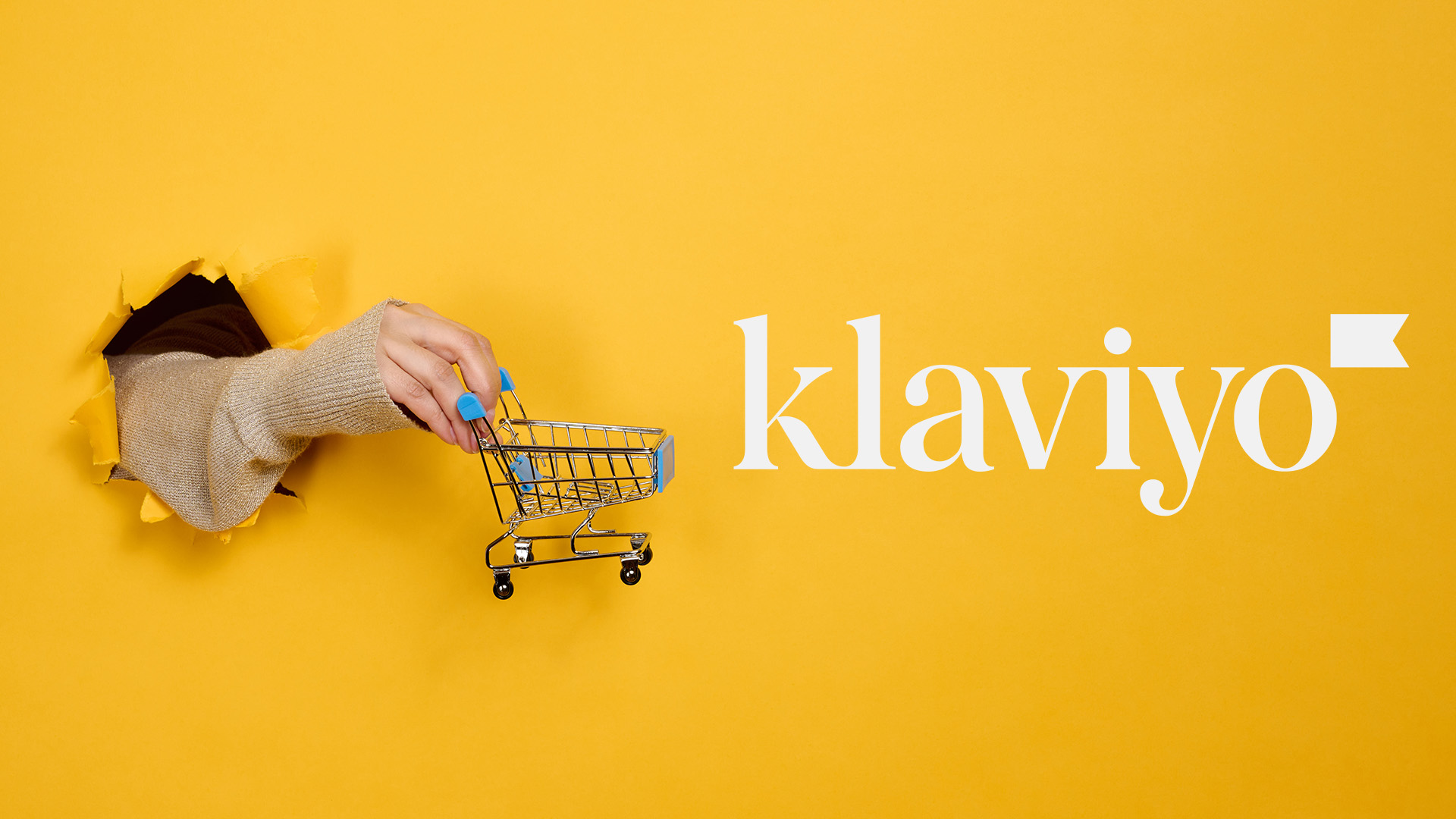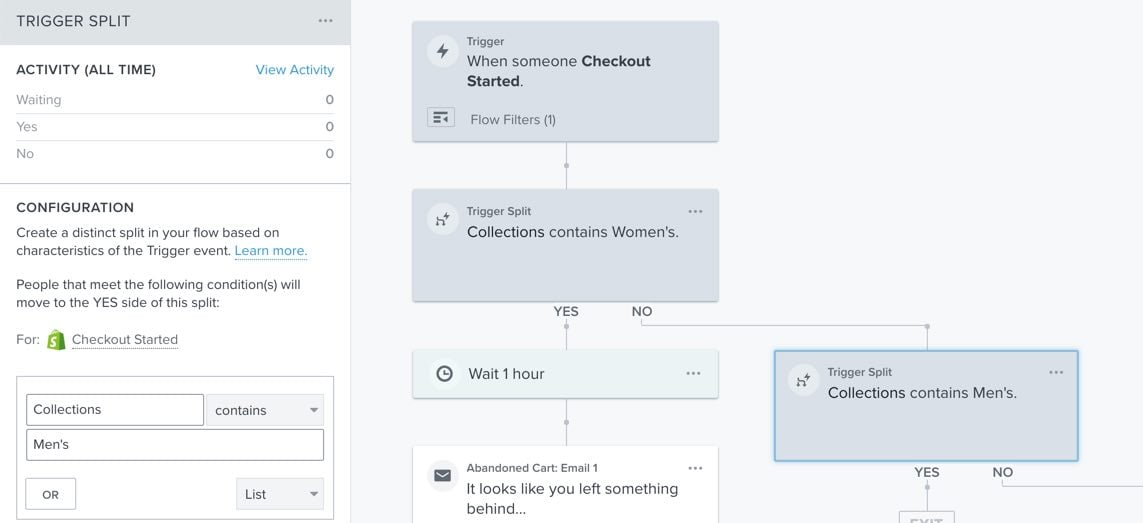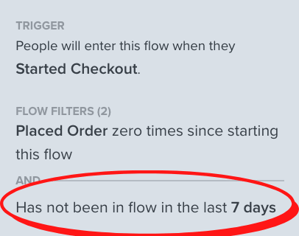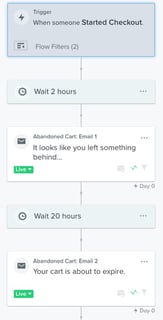It takes a lot of work to get customers to your eCommerce store. Whether you use SEO best practices, social media, or your customer email list, once a customer arrives at your online storefront, you want them to convert and not leave a Klaviyo abandoned cart. When your website visitors add products to their cart but don't end up checking out, they become part of a group of customers who had the intent to purchase but didn’t follow through.
According to Hubspot, 73.9% of online shopping carts have products that a buyer has already purchased once and may repurchase, or the buyer has purchased one item from the online store and are likely to buy another item. Setting up an effective Klaviyo abandoned cart strategy can convert these valuable visitors into sales for your business. With a powerful tool like Klaviyo, you can turn those abandoned items into revenue.
What Is An Abandoned Cart Email?
An abandoned cart email is an email that eCommerce merchants send to contacts in their database or CRM to remind them that they’ve left a product behind in their online shopping cart. People who shop online, add one or more products to their shopping cart but do not complete the purchase are considered cart abandoners. Abandoned cart emails remind these customers that they’ve not yet purchased after the product has sat in the cart for a predetermined amount of time.
Here’s a great email that Huckberry created to encourage shoppers to finish checking out after adding a bundle of boxer briefs to their cart.
What Is A Klaviyo Abandoned Cart Flow?
A Klaviyo abandoned cart flow is a series of automated emails and/or SMS messages that let leads and customers know they’ve left a product behind in their online shopping cart. Klaviyo enables merchants to set certain criteria to enroll cart abandoners in the workflow.
Abandoned cart flows differ from abandoned cart emails in that flows are the mechanism that automatically trigger the emails after a set of criteria has been met. It is important to set up your Klaviyo flows with care, or the right emails will not be sent to the right people at the right time. Below is an example of what a flow looks like inside of Klaviyo.
What To Include In Your Klaviyo Abandoned Cart Flow
Flow Triggers and Filters
The criteria that Klaviyo uses to enroll people in workflows are called triggers. Triggers are unique metrics, such as whether a person placed an order or viewed a product - among many other metrics. When it comes to creating a Klaviyo abandoned cart flow, the only trigger that must be set is whether a person started the checkout process. In Klaviyo, this is called Started Checkout.
The Started Checkout trigger means that every person in your database that has started the checkout will qualify, even if they already completed their purchase. To ensure that the people who fully convert and purchase are not sent abandoned cart emails or SMS messages, filters must be put in place. Remember, Klaviyo abandoned cart emails and SMS messages should be sent only to the people who add a product to their shopping cart but do not purchase.
That’s why it’s important to set up a flow filter, as seen in the screenshot above. Use the filter Placed Order and make sure that it says zero times since starting this flow. This filter will exclude the people that have purchased.
Another recommended filter to use is Hasn’t been in flow in the last X days. This filter helps merchants avoid sending messages to people who already received an abandoned cart notification if they happen to abandon their shopping cart again within the specified time period.
A Dynamic Content Block
Thankfully with Klaviyo, a dynamic content block as well as a go-to-cart button are included by default in an abandoned cart flow. A dynamic content block allows merchants to insert a product image, a link and product details into the email. The go-to-cart button is a call to action that lets receivers of the email easily navigate back to their shopping cart in one click.
Time Delays
There is no universal rule when it comes to the amount of time between abandoned cart messages. Depending on the type of products your company sells, it may be advised to wait longer or shorter periods of time before reaching out. Either way, delaying messages for certain periods of time is shown to increase open rates and drive abandoned cart conversions.
Understanding Cart Abandonment
To strategize on how to convert abandoned carts into transactions, it helps to understand why customers abandon carts in the first place. There are a few main reasons why online shoppers fail to follow through with checkout.
- Unexpected costs:
Customers may be put off by high shipping costs or other hidden costs. - Forced to create an account:
eCommerce stores that force a customer to create an account before they check out run the risk of cart abandonment. - Security concerns:
Any red flags on your checkout page may stop someone from completing a purchase. - Limited payment options:
Most people have one or two preferred methods of payment. If your site only accepts certain payment types, shoppers may skip your store and find an alternative. - Items saved for later:
Some shoppers add things to their cart with the plan to come back later and buy them.
Whatever is stopping your customer from completing checkout, Klaviyo can help identify the issues and re-engage these high-intent potential customers.
Klaviyo Abandoned Cart Strategy 1: Timing is Everything
It's crucial to carefully time your abandoned cart email. When customers leave a Klaviyo abandoned cart, it's often because they were distracted by something else. If you send your email during this busy time, the email stands a good chance of getting buried and lost in the shuffle.
Klaviyo recommends seeing the first reminder email between 2-4 hours after cart abandonment. However, you can send an email as soon as 30 minutes after cart abandonment. This email needs to be friendly and organic. If customers don't engage after this initial email, you can send a second email 24-48 hours after they abandon their cart.
Klaviyo Abandoned Cart Strategy 2: Personalization and Relevance
Using personalized subject lines is a proven method for ensuring a conversion. To create more personalization, you can use information from the customer's profile. This might be their name, the name of their company, or the item they left behind in the cart.
Add here about not getting too specific because it can be creepy.
Klaviyo Abandoned Cart Strategy 3: Incentivization
To entice a customer back to their shopping cart, try incentives. Incentives might include a coupon to apply to their purchase or details about your return and exchange policy. Another idea is to offer free shipping.
Keep in mind that you want to offer value to the customer without eroding your own profit margins. Carefully calculate how much of an incentive you can give while keeping the sale profitable for your business.
Klaviyo Abandoned Cart Strategy 4: Clear and Compelling CTAs
It's important to include an enticing call-to-action when you send abandoned cart emails. With a clear CTA, your potential shoppers are more likely to return to their cart to finish their purchase.
You can try traditional CTAS such as "check out now" or "complete your order." Alternatively, one idea is to get creative with your CTAs. Consider some of these ideas:
- Activate free shipping
- Get 25% off
- Take another look
If your brand has a more conversational and personal tone, try something that will resonate with a like-minded customer. Phrases such as "Steal the deal!" and "Let's do this!" might work well with your site visitors.
Klaviyo Abandoned Cart Strategy 5: Continuous Optimization and Testing
When you send the same emails repeatedly, it likely won't help your conversion rate. Instead, it's a good idea to run controlled experiments using different creative or sales copy. You can also add calls-to-action (CTA) to explore what your customers may respond to.
A/B testing is an excellent marketing strategy to reliably make data-driven decisions. You can employ A/B testing by trying different subject lines and timing. Using Klaviyo's analytics can help you track the performance of your strategies. Then, you can refine your cart abandonment emails for better results.
Conclusion: Solving the Klaviyo Abandoned Cart Dilemma
Keeping timing in mind, doing A/B testing, and including a call-to-action can all help increase conversions from abandoned carts. Also, remember that today's online shoppers expect personalization and incentives when buying from websites. When you implement these strategies into your eCommerce abandoned cart email strategy, you'll have a much better chance of capturing the sale.
-%20Everything%20You%20Need%20to%20Know.jpg?width=348&height=450&name=Guide%20Form%20-%20Klaviyo%20Email%20Marketing%20(%2BSMS)-%20Everything%20You%20Need%20to%20Know.jpg)
eBook
Klaviyo Email Marketing (+SMS):
Everything You Need to Know
Explore tags:
About the author
Subscribe to the Groove Newsletter
Get the latest updates and insights straight to your inbox




-%20Everything%20You%20Need%20to%20Know.jpg?width=267&height=350&name=Download%20Guide%20Book%20-%20Klaviyo%20Email%20Marketing%20(%2BSMS)-%20Everything%20You%20Need%20to%20Know.jpg)





